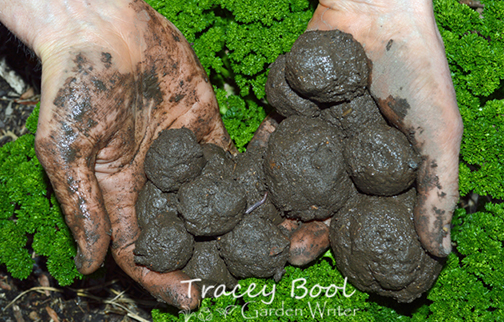|
What on Earth are Clay Seed Balls?
(25 September 2014) Clay seed balls are literally that – plant seeds which are encased in a predominately clay mixture to aid in their germination and initial growth. It is a technique commonly utilised in permaculture circles and can easily be adapted in your backyard. The idea is to supply seeds with all they need to get started when the surrounding conditions are favourable and also to protect them from wildlife, rodents, and the like. The concept for clay balls originated from Japan, where 1-3 seeds of the same species were pelletised and broadcast in mostly agricultural applications. Clay balls have evolved to contain anywhere from 1 to 30 seeds of one or many plant species, and range in size from a marble to a baseball. There are many advantages to using clay balls to sow and germinate seed, not least that they are simply broadcast onto the soil’s surface, letting Mother Nature take care of the rest. They can be used in all climates and suit many plant types such as natives and vegetables. You can also incorporate a selection of mutually-beneficial varieties including those used for green manure crops and fixing nitrogen in the soil for instance. Clay seed balls are made up of around 1.5 parts clay and 1 part compost. You can also add worm castings and rock dust (or similar) to supply mineral component and wider range of nutrients than using clay and compost only. Simply mix ingredients before incorporating seed, and then dry seed balls in the sun before broadcasting them on the soil’s surface (drying is not necessary if applying at the appropriate time of year for the chosen species). Then watch the magic unfold when it rains and the seed balls swell with moisture, providing the enclosed seeds with all they need to get the best possible start. |

